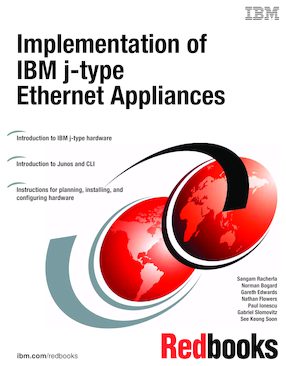
Published on 01 March 2011
Read in Google Books Order hardcopy
Share this page:
ISBN-10: 0738435031
ISBN-13: 9780738435039
IBM Form #: SG24-7883-00
Authors: Sangam Racherla, Norman Bogard, Gareth Edwards, Nathan Flowers, Paul Ionescu, Gabriel Slomovitz and See Keong Soon
Abstract
IBM® j-type data center solutions that run Junos software provide operational agility and efficiency that dramatically simplifies the network and delivers unprecedented savings. This solution enables a network design with fewer devices, interconnections, and network tiers. Beyond the obvious cost advantages, the design enables the following key benefits:
- Reduces latency
- Simplifies device management
- Delivers significant power, cooling, and space savings
- Eliminates multiple system failure points
- Performs pervasive security
The high-performance data center is built around IBM j-type e-series switches, m-series routers, and s-series firewalls. It is a new family of powerful products that help shape the next-generation dynamic infrastructure.
IBM j-type s-series Ethernet Appliances perform essential networking security functions and are ready for next-generation data center services and applications. Designed on top of the Junos operating system, s-series Ethernet Appliances provide flexible processing scalability, I/O scalability, network segmentation, and services integration.
In this Redbooks® publication, we target IT professionals who sell, design, or administer IBM j-type networking solutions and cover the basic installation and maintenance of the IBM j-type s-series Ethernet Appliance hardware.
Table of Contents
Chapter 1. Fundamentals of Ethernet networking
Chapter 2. Introduction to the IBM j-type Ethernet appliances
Chapter 3. Initial hardware planning of IBM j-type appliances
Chapter 4. Junos fundamentals
Chapter 5. Initial configuration
Chapter 6. User interface
Chapter 7. Class of service
Chapter 8. Network security
Chapter 9. Advanced configuration
Chapter 10. Management and monitoring
Chapter 11. Maintenance and analysis